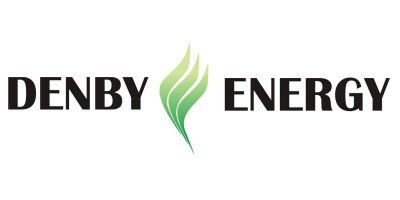

- Home
- Companies
- Denby Energy
- Training
- Home Energy Audit Training Courses - ...
Home Energy Audit Training Courses - Get Started
Get Started with the best Level 1 Home Energy Audit Training available today! You get the most comprehensive Level 1 program available today. Includes training, audit templates, resources, business tools and more. Everything you need to start making money saving energy.
INCLUDES:
- Home Energy Audit Training
- Home Energy Auditor Certification
- Essential Audit Resources
- Marketing Training
- Business Start Up Resources
Denby Energy Home Energy Audit Training is written expressly for your success.
Your Training is:
1) Accurate & Complete
We teach you what is important for your future. The materials are accurate and complete.
2) Engaging
You learn best when engaged by the training. Our training gets rave reviews from students who love it.
3) Effective
We teach beyond theory, focusing on practical application. We make sure you know how to make it work for you.
4) Guaranteed
Your Energy Audit Training is 100% guaranteed. Click here to learn more.
Designed for your success.
Denby Energy Home Energy Audit Training gives you the most comprehensive program available.
Intro: Introduction to Energy Auditing
Designed for your success. Denby Energy Home Energy Audit Training gives you the most comprehensive program available. Our welcome module that explains how the training process works and what you can expect from the course. This module sets the stage for the rest of your energy audit learning by giving you the essential foundation from which all the other elements will build.
You need a strong foundation to build your knowledge
Module 1: Basics of Energy
You’ll Learn:
1) Where energy comes from
2) How it gets to the home
3) How to Read and Understand Energy Bills
Knowing how to read an Energy Bill can save clients hundreds of dollars in wasted energy.
Module 2: Lighting
You’ll Learn:
1) The different types of lighting (CLFs, LEDs, CCFLs, and more)
2) How to quantify exactly how much it costs to run a light bulb
3) How to significantly lower energy bills
The average homeowner spends about $400 a year on lighting alone. With simple changes you can save homeowners about $300!
Module 3: Heating and Cooling
You’ll Learn:
1) How heaters work
2) How air conditioners work
3) How to select and use the air filters
3) How to significantly reduce the energy use without pricey upgrades.
The average homeowner spends over $900 a year on heating and cooling. Simple techniques can save the homeowner hundreds of dollars. For example, installing a programmable thermostat can save up to 15% or $135 alone!
Module 4: Appliances, Water Heaters and Electronics
You’ll Learn:
1) How to identify wasted energy
2) About tank and tankless water heaters.
3) How to save money by installing efficient appliances.
4) Easy to apply strategies and cost effective solutions that work.
The average homeowner can save almost 15% on their water heating bill with one simple strategy – turning down the temperature.
Module 5: Insulation, Doors and Windows
You’ll Learn:
1) The different types of insulation and R value
2) The biggest trouble spots in a home
3) How to properly seal and insulate a home.
Sealing air leaks can reduce heating and cooling costs by up to 10%.
Module 6: Water
You’ll Learn:
1) How water plays a critical role in energy efficiency.
2) How reducing shower loads can save significant money.
3) That new low-flow shower heads look and feel like the real thing – making changes really easy.
A leaking faucet that drips once every 2 seconds is wasting about 1,600 gallons a year – if that is hot water that you just paid to heat, you just wasted money!
Module 7: Advanced Audit Techniques
You’ll Learn:
1) How tools can increase your business.
2) How Blower Doors work, and how to read the outputs.
3) How Duct Blasters work, and how to read the outputs.
Blower doors depressurize the home and test for the amount of air pulled into the house through gaps in the building shell. The door can be used to diagnose the leaks as well as to “rate” the home.
Module 8: Tax Rebates, Credits and other Incentives
You’ll Learn:
1) The critical difference between a tax rebate and tax credit.
2) How to actually calculate rebates and credits.
3) About the major federal tax programs (including the fine-print)
4) Where to go to get the most current and accurate list of rebates, credits and incentives.
A tax rebate of $500 can result in an actual “savings” of only $75. Where as a tax credit would have an actual “savings” of $500.
